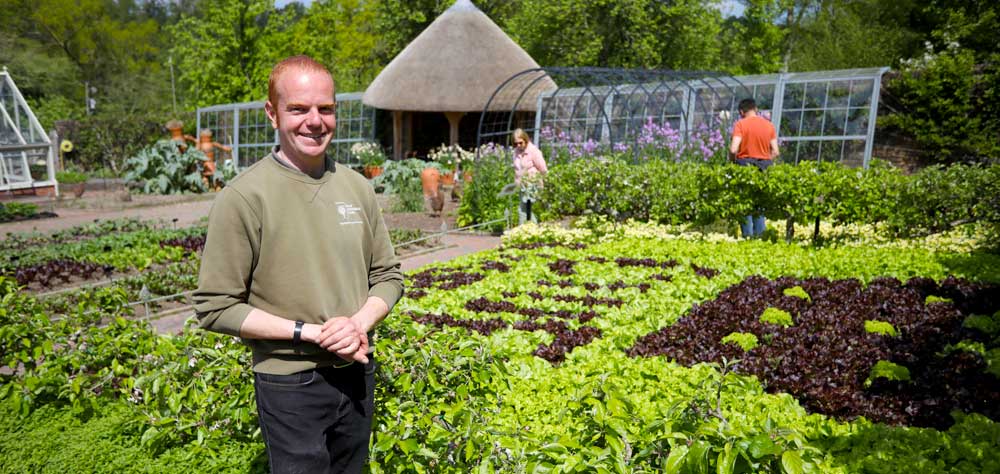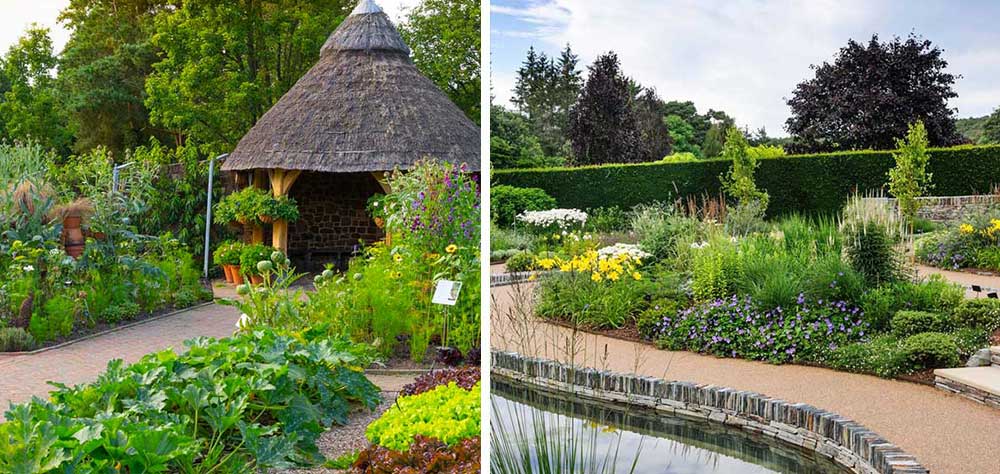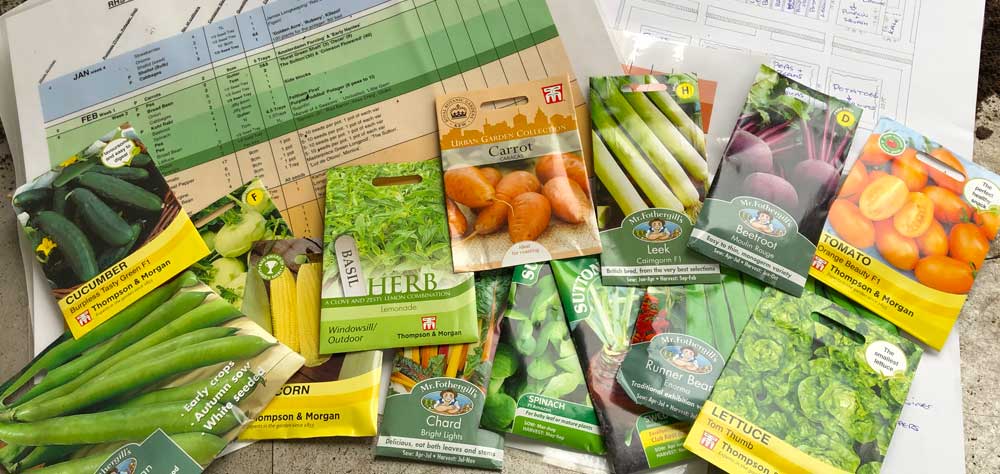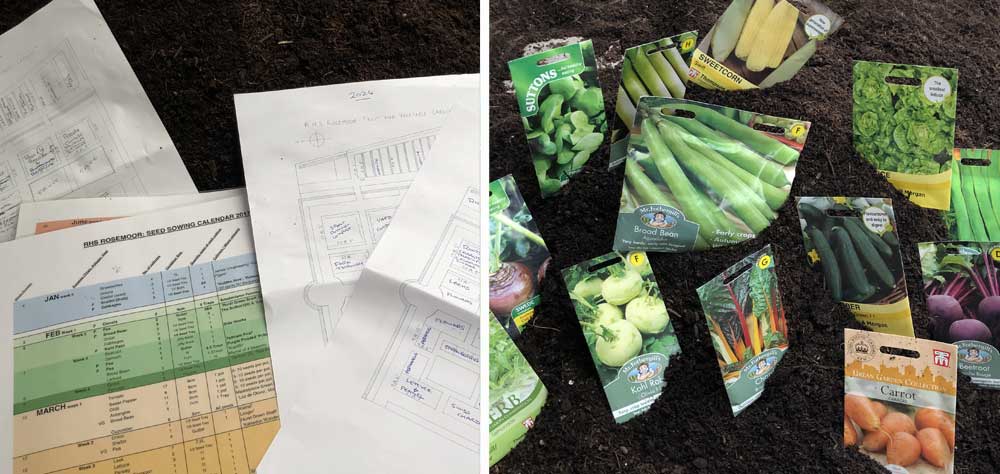It's All About Planning - Peter Adams, Edibles Team Leader at RHS Garden Rosemoor
Peter Adams guides us through the story of building a renowned kitchen garden
Growing and managing the RHS Garden Rosemoor kitchen garden takes meticulous planning. We’re growing an ever increasing variety of crops for our onsite restaurant to provide our visitors with an abundance of fresh produce for tasty dishes they can enjoy.
As with any garden, it’s all in the planning. Here’s how we get our kitchen garden up and running for Spring…

The battle for a successful fruit and vegetable garden is won in the previous winter.
Winter is where the plans are made, seeds are sourced, and all the preparation is finalised. As a good college lecturer once said to me “failing to prepare, is preparing to fail”. This useful piece of life advice that has stuck with me over the years and informed my approach to gardening.
Ensuring we’re creating the best display throughout the season, right through to harvest, relies upon intensive fore planning. It’s important to remember sticking to a thorough plan isn’t reserved for big gardens like RHS Garden Rosemoor. A little thought can reap big rewards for those growing at home; on any scale from an allotment to a few humble containers by the back door or on a balcony.
 Garden at RHS Rosemoor
Garden at RHS Rosemoor
What is RHS Garden Rosemoor?An enchanting garden nestled in the beautiful Torridge Valley within half an hour of Dartmoor National Park, RHS Garden Rosemoor is an essential piece of British horticultural history. The garden is rich in variety no matter the season, featuring planting displays as intricate as they are inspiring and the largest rose gardens in the South West. Take in the sights (including the Fruit and Vegetable Garden which showcases the Agriframes Elegance collection of supports and crop cages) or enjoy The Garden Restaurant’s seasonal menu and relaxed dining atmosphere. Explore some of our favourite places around the UK featuring Agriframes structures in use on our Garden Locations page. |
The planning behind the RHS Garden Rosemoor
It’s all so easy to think that growing fruit and veg is something that only needs to be thought about in March, when the evenings begin to draw out, temperatures begin to rise and with a little bit of luck, the sun begins to shine.
For us, it all began back in December, where as a team, we all took a moment to sit round the table with a cuppa, pulling out the previous year’s plans, seeds lists, and assortment of other records, noting down our successes and failures.

Step One: Crops & Display
From this we begin the process of deciding what the kitchen garden will look like for the coming year.
With a blank plan of the kitchen garden, we begin to draw on the crops and where they will go. This is particularly important for us, as we follow a four year crop rotation, meaning that we don’t grow a similar type of crop on the same piece of ground more than once in a four year time frame.
Why is this? It’s pretty simple really, it helps to prevent the build-up of soil borne pests and diseases, as well as enabling different crops to benefit from varying nutrients in the soil, without depleting them to an unsustainable level, this helps lay down the backbone of our layout for the year ahead.
Try your hand at replicating RHS Garden Rosemoor’s crop cultivation with our range of Crop Cages - designed to help you grow berries, vegetables and other everyday fruits.
 Agriframes Elegance Crop Cage at RHS Rosemoor
Agriframes Elegance Crop Cage at RHS Rosemoor
Step Two: Soil Cultivation
Next comes our soil cultivation planning, we use a mixture of traditional soil cultivations and areas dedicated to practising no dig methods. Different crops demand different things from the soil, for example legumes (that’s the pea and bean family) love a rich freshly manured ground, whereas cabbages are not so keen; they love the nitrogen bacteria which can be found on the previous year’s legumes leaves.
Firm ground created by a winter of weathering and little tilling of the soil helps to encourage formations of tight headed cabbages, firm sprouts, and strong florets of cauliflowers and broccoli.

Step Three: Root Crops
Following on in the rotation are our root crops which enjoy a less rich soil, helping to prevent splitting and cracking but do enjoy the ground being forked through to ease the compaction, in between all of this we sneak in a crop of potatoes for good measure. With this in mind we are able to decide which pieces of ground to manure, which to leave, which not to fork over, or those that need a good dig through, we mark this all down on the plan, so we all know what needs what attention.
It’s worth mentioning now as well, that we hang on to these plans as a record, we cross reference the last four years whilst planning for the year ahead.
Getting to work - Choosing what to grow
Now we have our plans, the fun bit can begin!
Out come the seed catalogues and trawling the seed companies websites for what we want to grow. To ensure success we generally stick with growing two thirds tried and tested varieties that we have grown in previous years; that way we know what will grow well in our conditions. To keep it fresh we look to grow around a third new varieties, trying something new and exciting; with a little bit of luck they will become the tried and tested varieties of the future.
Referencing back to our plans we are able to calculate how much room we have for each crop and how many varieties we can fit into the space; this is valuable as it helps prevent either under or over ordering seeds.

Best crops to grow
With all this in place we do one last planning exercise - creating a sowing schedule.
This week by week plan of when we want to sow each crop, for us it's fairly similar year on year; but it does need tweaking along the way and almost runs with military precision - as we have so much to sow and grow!
Some things like to be sown early whilst others a little later, some are tough and can take the colder weather, whereas others are tender and if sown too soon will be a risk from late frosts or poor weather. The back of the seed packets is always the best guide of when to sow something as often even different varieties of the same crop have preference to when they like to be sown and can often differ by up to a couple of months.
Whilst all this planning sounds a lot, it really helps us through the season, making life a little easier, smoother running, and with just a little luck, we create a beautiful yet abundantly productive kitchen garden, but don’t forget to keep a little record of what does well or doesn’t quite hit the mark, for it will all help with next year’s planning.
Whilst all this planning sounds a lot, it really helps us through the season, making life a little easier, smoother running, and with just a little luck, we create a beautiful yet abundantly productive kitchen garden, but don’t forget to keep a little record of what does well or doesn’t quite hit the mark, for it will all help with next year’s planning.
Want to hear more from Peter? Check out our interview with him from 2023, discussing his gardening origins, daily pruning schedule and favourite part of RHS Garden Rosemoor.









